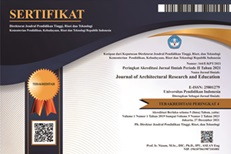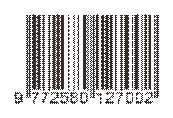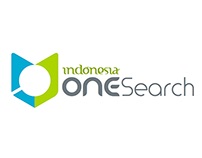USER BEHAVIORAL STUDY at the CO-WORKING SPACES WITHIN EX-MILITARY WAREHOUSE BUILDINGS
Abstract
Increasingly urban density causes land prices to become more expensive through the years. Repurposing old buildings that are no longer functioning as new functions can be one of the solutions. By utilizing the cultural heritage building of ex-military warehouses of the former Dutch Colonial Government, Warehouse 22 uses 3 parts of the warehouses for a commercial function that is more relevant to today's needs. One of the facilities available is co-working spaces, as a place for activities that became the main focus of this research. This research method applies descriptive qualitative research carried out through observation to describe the settings of activities in its place, especially in the co-working space area through place-centered mapping. This research aims to understand the phenomenon that occurs in the co-working space area related to the behavior of its users, privacy, personal space, and territory. This study shows how a pandemic indirectly changes our daily behavior in the settings where the activity occurs and creates a new lifestyle as an adjustment in the present and future.
Keywords
Full Text:
PDFReferences
Adha, Fadly. (2018). The Influence of Emotional Intelligence on Entrepreneurial Performance (Case Study on Creative MSMEs in Warehouse 22 Bandung). e-Proceeding of Management, 5(3). https://openlibrarypublications.telkomuniversity.ac.id/index.php/management/article/view/8208.
Altman, Irwin. (1975). Environment and Social Behavior: Privacy, Personal Space, Territory, and Crowding. Belmont, California: Wadsworth Publishing.
Haryadi. Setiawan, B. (1995). Environmental Architecture and Behavior: An Introduction to Methodology and Application Theory. Yogyakarta: UGM Press
Holahan, Charles. J. (1982). Environmental Psychology. New York: Random House.
Kniffin, Kevin. M., et al. (2021). COVID-19 and the Workplace: Implications, Issues, and Insights for Future Research and Action. American Psychologist, 76(1), Pp. 63-77. http://dx.doi.org/10.1037/amp0000716.
Maemanah, Shafira., et al. (2018). Factors that shape the work environment in the interior design of a coworking space in the city of Bandung. Journal of Rekarupa, 5(1). https://ejurnal.itenas.ac.id/index.php/rekarupa/article/view/2223/1818.
Prabowo, Hendro. (1998). Introduction to Environmental Psychology. Jakarta: Gunadarma.
Prayoga, Novan., et al. (2017) Adaptive Reuse in Military Warehouse Buildings Case Study: Warehouse 22 Bandung. Journal of Reka Karsa 5(1).
Putra, Gierlang B., Agirachman. (2016). Urban Coworking Space Creative Tourism in Digital. Conference: Arte-Polis 6 International Conference, Vol. 1.
https://www.researchgate.net/publication/316472768.
Rapport, Amos. (1977). Human Aspects of Urban Form: Towards a Man-Environment Approach to Urban Form and Design. New York: Pergamon Press.
Sari, Dian P., Pramitasari, D. (2019). Seating Selection Behavior in the Architectural Engineering Department Library, Gadjah Mada University. Journal of Grid Architecture, 1(1), Pp. 20-29. https://ejournal.unsa.ac.id/index.php/grid/article/view/258.
Wang, Bin., et al. (2021). Achieving Effective Remote Working During the COVID-19 Pandemic: A Work Design Perspective. Applied Psychology: An International Review, 2020, 70(1), Pp. 16-59. https://doi.org/10.1111/apps.12290.
DOI: https://doi.org/10.17509/jare.v5i1.52998
Refbacks
- There are currently no refbacks.
Copyright (c) 2024 Journal of Architectural Research and Education

This work is licensed under a Creative Commons Attribution-NonCommercial-ShareAlike 4.0 International License.

This work is licensed under a Creative Commons Attribution-ShareAlike 4.0 International License.








